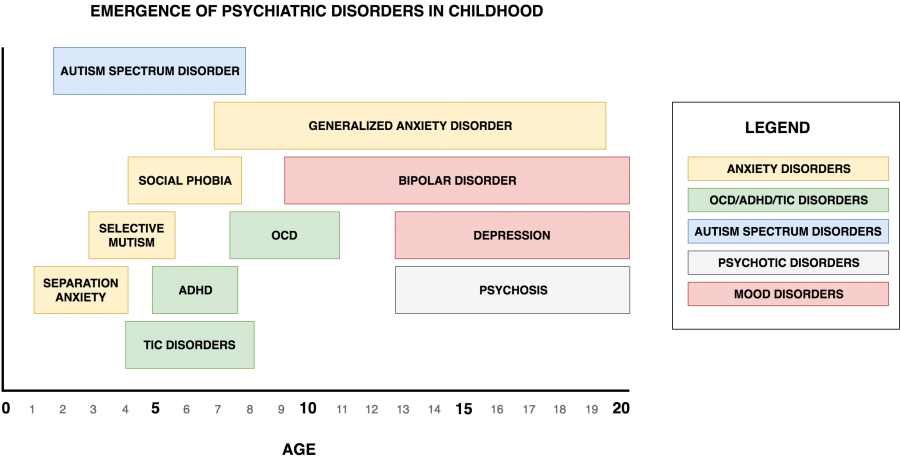- Last edited on January 25, 2022
Child and Adolescent Psychiatry
Primer
Child and Adolescent Mental Disorders are an important part of psychiatry. Half of all mental illnesses begin by age 14 and this increases to more than 75% by the mid-20s.[1] Neuropsychiatric conditions are the leading cause of disability in children and adolescents around the world. Untreated, these disorders have a major impact on neurodevelopment and education.
Developmental Factors
In children and adolescents, it is critical to to distinguish between symptoms of a psychiatric disorder versus behaviours that are normal for the child’s stage of development. For example, does a child have ADHD symptoms or do they have normal distractibility and restlessness? Does an adolescent have OCD symptoms or normal rituals and superstitions?
Non-psychiatric Diagnoses
It is important to remember that many presentations of “psychiatric” concern are part of normal child development, or due to non-psychiatric reasons such as parent-child relational conflicts, sibling relational problems, or high expressed emotion level within family. In these cases, families would benefit from psychosocial supports such as family therapy, or parent training.
Timeline of Childhood Disorders
